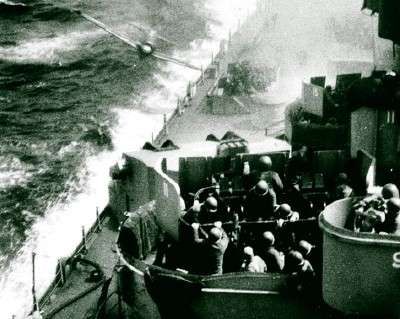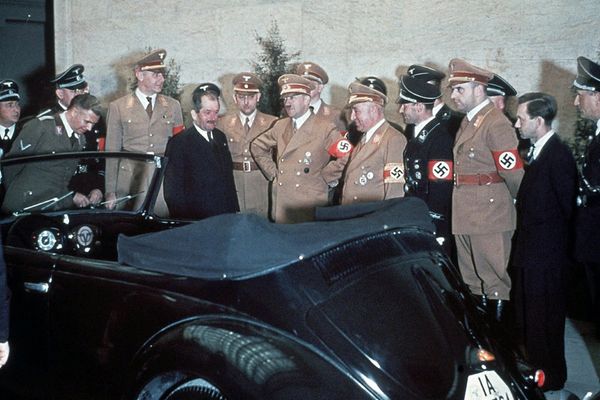
April 1945. The Battle of Seelow Heights is underway. The Allied armies are closing in on Berlin, and the German army has failed to push back both the Soviet and the Allied fronts. Adolf Hitler, locked in his Fuhrerbunker, knows the war is lost. He decides to marry his mistress, Eva Braun, enjoy a Champagne breakfast, write out his last will and testament, and then commit suicide with his new wife. Their bodies are then burned in accordance with their wishes, and the world breathes a collective sigh of relief.
But not everyone believes this official line about Hitler's end. That's why Matt Frederick, Ben Bowlin and Noel Brown tackle the history and intrigue behind What Happened to Hitler? in this episode of the Stuff They Don't Want You To Know podcast.
Advertisement
One of history's greatest villains, Hitler was responsible for creating a brutally fascist and racist regime in Germany that led to World War II and numerous atrocities like the Holocaust. It's understandable that his death was eagerly anticipated the world over, as many thought that the end of the man would mean the end of the war. Hitler's bodyguard reported that he had seen Hitler's and Braun's bodies before they were taken to the chancellery and burned. But the lack of bodies sparked rumors that they actually escaped during the last hours of the war.
It's certainly possible — as many as 9,000 Nazis escaped to South America and lived to ripe old ages, including the "Angel of Death" Dr. Josef Mengele. That's because Juan Peron, president of Argentina, ran a fascist-leaning government sympathetic to the Reich's aims and maintained neutrality throughout the war. Peron also helped establish "ratlines," ports through which Nazis could be smuggled out of Europe by way of Italy and Spain.
Did Adolf Hitler and his new wife use the ratlines to get on a boat in Spain and escape to Argentina or Brazil? Some people think so, and that he lived as long as 1978. The FBI maintained files in which Hitler sightings are reported, although never verified, and didn't declare Hitler officially dead until 1956. In June 2017, a trove of Nazi artifacts were discovered behind a hidden wall in a home in Buenos Aires, Argentina and breathed new life into this theory.
It's also been theorized that Hitler and a number of his SS men escaped to the secret fortress in Antarctica called Base 221. The Germans claimed they created the base in 1938 when a Nazi expedition discovered a huge underground cave where they made contact with aliens or unearthed alien technologies that allowed them to build advanced weapons systems. Perhaps Hitler escaped to that cold and desolate place to rebuild his vision for humanity, with alien tech to help? Though this tale seems a lot more unlikely than warm and sunny South America.
A lot of the misinformation swirling around Hitler's whereabouts is due in part to Russian propaganda after the war. Josef Stalin was obsessed with making sure that Hitler was dead, and ordered his Soviet armies to exhume any remains they could find. The soldiers preserved ashes and some jawbone fragments identified as Hitler's, but Stalin was happy to let the Allies think he might still be out there somewhere.
Those preserved bone fragments have now been tested and the secret Russian files released, so if you want to know what Matt, Ben and Noel think happened to Hitler (and about his alleged opioid addiction) tune in to this episode of Stuff They Don't Want You to Know.
Advertisement


